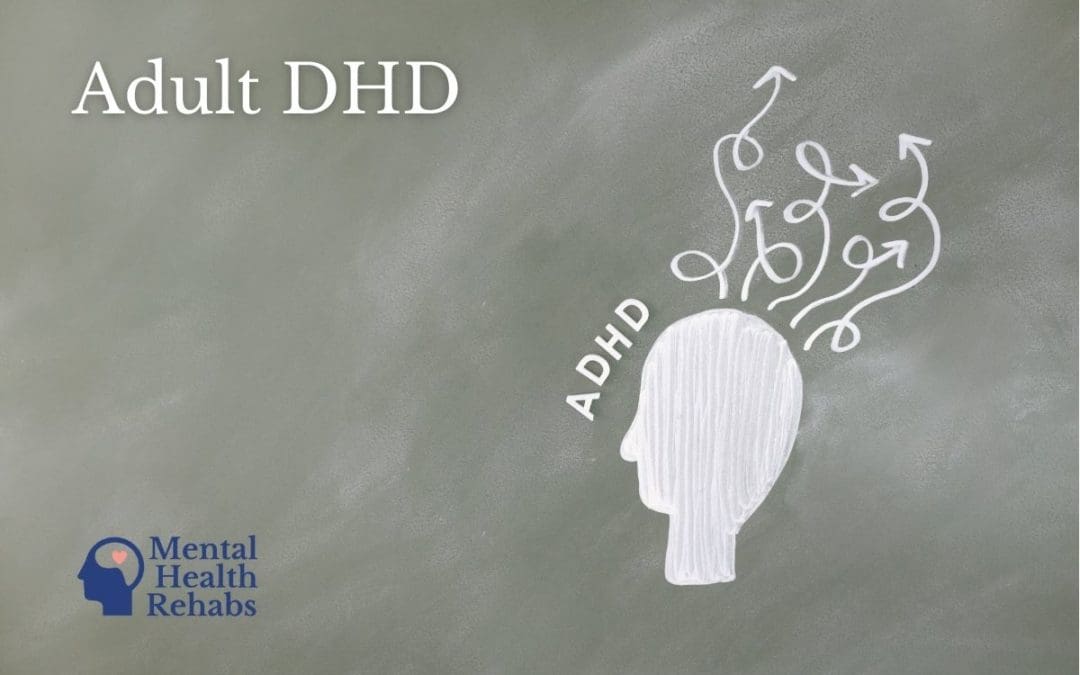Do you find yourself forgetting words in the middle of your sentence, struggling to find the energy (or motivation) to complete basic chores, or finding it difficult to maintain romantic or platonic relationships? If so, your first instinct might be to blame it on getting older. Although the daily obligations of everyday life can leave adults understandably frazzled (having to juggle all those things has you spread thin with little bandwidth for anything else) the root cause might actually be a condition more commonly associated with children: ADHD.
What Is Adult ADHD?
ADHD stands for attention-deficit/hyperactivity disorder which occurs on a scale ranging from mild, moderate, to severe. It is a type of neurodevelopment syndrome that can interfere with focus and impulse control, leaving these individuals prone to forgetfulness and disorganization. Contrary to how ADHD is often depicted (an unruly child bouncing off the walls), hyperactivity isn’t always a symptom and it isn’t limited to affecting children.
When a person exhibits difficulty focusing and impulsivity without hyper activeness, this is what’s known as inattentive type ADHD and what was previously referred to as attention deficit disorder (ADD). Until 1994, ADD and ADHD used to be considered two distinct mental disorders but the former is now an out-of-date term whose condition falls under the greater ADHD label.
ADHD in Adults vs. Children
As the most common childhood disorder affecting over 6 million American youths between the ages of 2 and 17, ADHD is often thought of as a children’s mental disorder. This reputation is also largely due to the fact that most symptoms of ADHD are much more recognizable in children. Studies have found that ADHD symptoms can wane as a person gets older (though they rarely ever fully disappear).
Hyperactivity, and to a lesser extent, impulsiveness, lessen during the late childhood or early adolescent years. Without these behavioral identifiers, it increases the likelihood that undiagnosed ADHD in a child will continue to go unrecognized as an adult. This is also the same reason why girls and women, who primarily have the inattentive type of ADHD, are significantly underdiagnosed for the disorder.
The inattentive symptoms of adult ADHD, however, either persist or worsen with age. While attention span might improve, it may still fall short of what’s required for an adult to be productive in today’s society. As such, ADHD manifests itself quite differently in adults than it does in children.
Symptoms of ADHD in Children:
- Frequent daydreaming
- Frequently losing or forgetting things
- Fidgeting or squirming
- Talkative
- Difficulty getting along with others
- Difficulty taking turns
Symptoms of ADHD in Adults:
- Difficulty prioritizing tasks
- Difficulty multitasking
- Disorganized and poor planning skills
- Poor time management
- Low frustration tolerance
- Frequent mood swings
- Leaving tasks incomplete
Real-Life Consequences of ADHD Behavior in Adults
Although all adults are likely to experience some of the manifestations of adult ADHD at some point in their life, this condition is marked by these symptoms interfering with day-to-day life. Here are some ways that ADHD might appear:
Reckless driving
Difficulty staying focused might result in an adult with ADHD being more distractible. The lack of impulse control can lead to a greater propensity to speed or engage in other risky driving behaviors, both of which can directly contribute to accidents.
Difficulty maintaining employment
Getting to work on time, staying organized, and paying meticulous attention to detail are basic requirements for any type of employment. These tasks are particularly difficult for those with ADHD and can snowball into unsatisfactory job performance.
Poor money management
Adult ADHD can have very real consequences on your wallet. The lack of impulse control could lead to unnecessary spending, but the inability to stay organized can be equally disastrous.
Unstable relationships
ADHD makes it difficult for individuals to pay attention and remember things. Forgotten birthdays and other important dates paired with poor listening skills set the stage for relationship frustrations.
Getting Help for Adult ADHD
If you think you might have ADHD, seek a professional, even if you feel that you’ve been managing just fine. This condition often coexists with other mental illnesses such as mood disorders, anxiety disorders, or psychiatric disorders, all of which can snowball to negatively affect a person’s mental and physical wellbeing.
Fortunately, there are a number of different treatment options available to make the symptoms of adult ADHD manageable including medications and psychotherapy. The first step is to get a proper diagnosis from a certified mental health professional near you. This process is slightly different from diagnosing ADHD in children, but mostly the same. They will seek to verify:
- At least five ADHD symptoms
- That the symptoms are present in at least two different environments (ex. Home and https://mentalhealthrehabs.com/treatment/work)
- That these symptoms interfere with daily responsibilities

